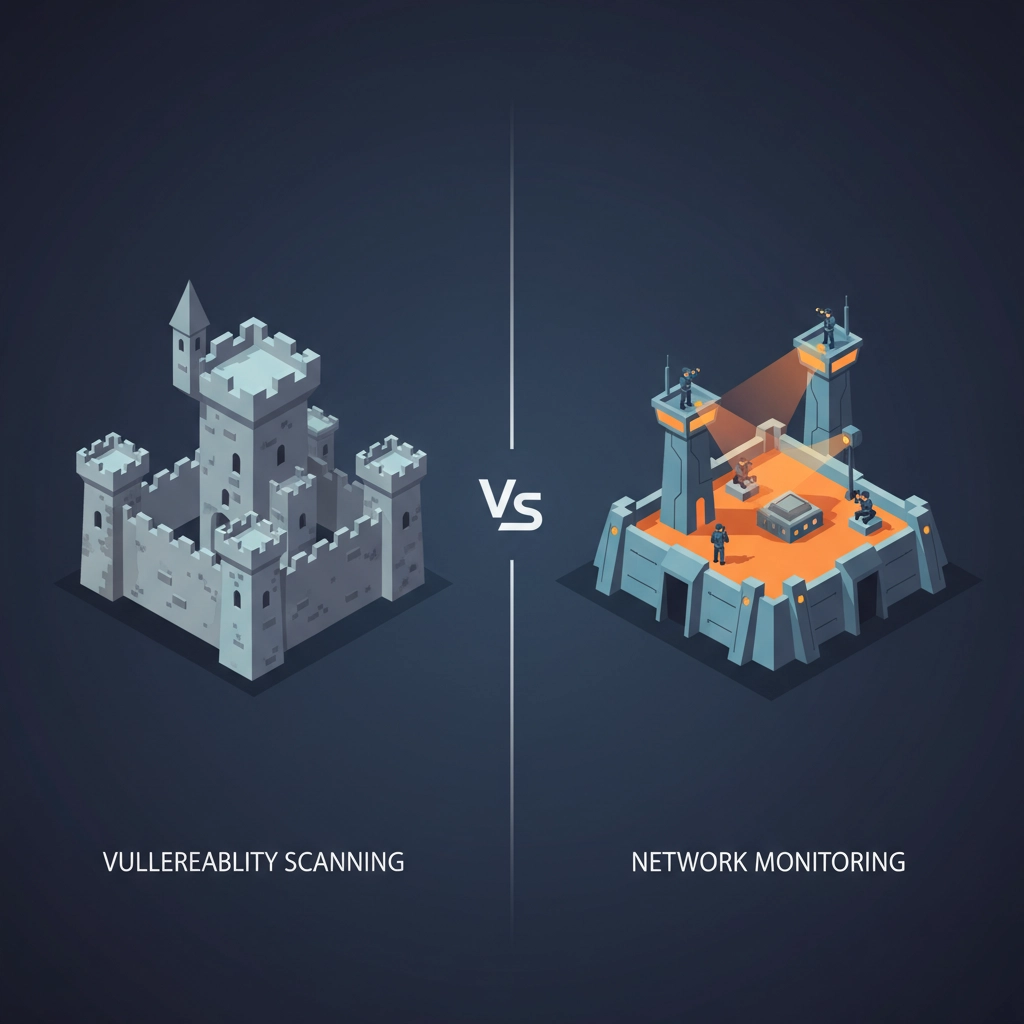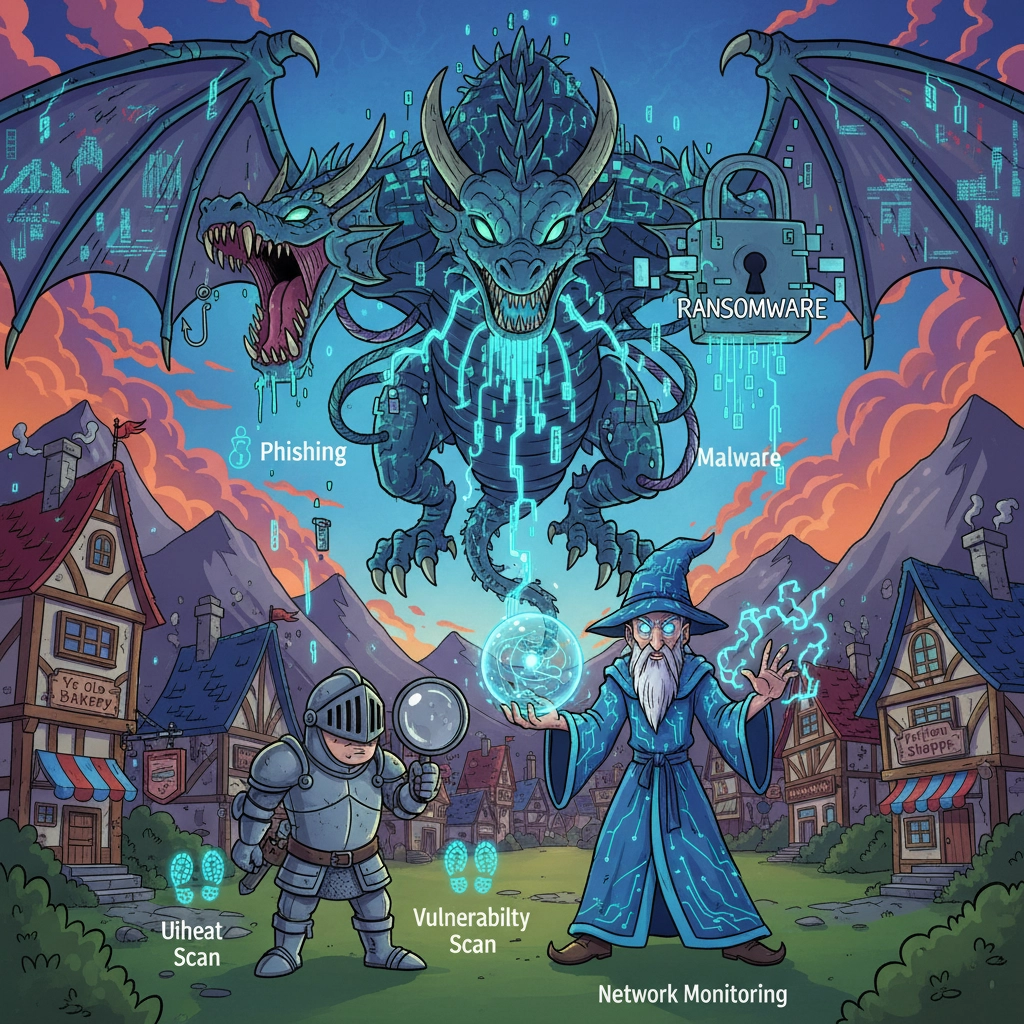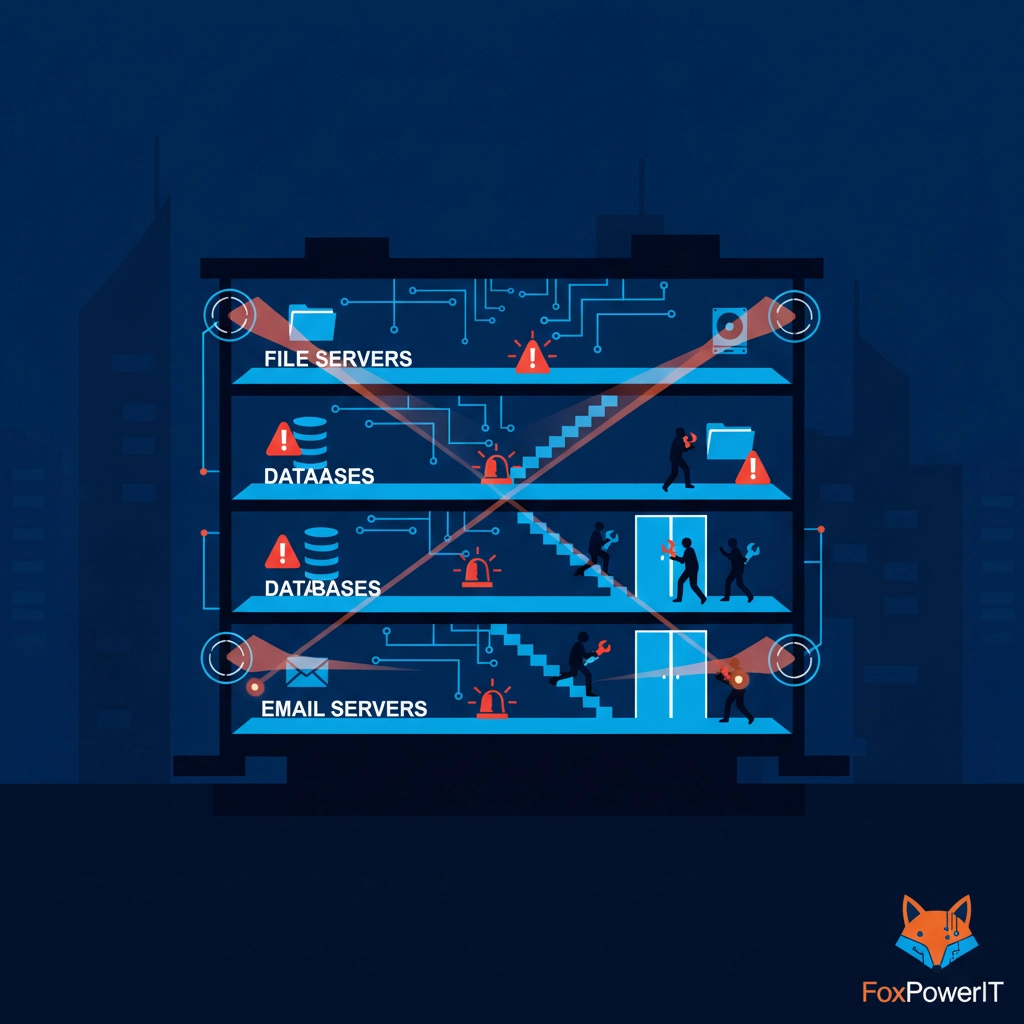Last month, a Hartford manufacturing company called me at 3 AM. Their entire network was down, customer data was compromised, and they were staring at a potential $75,000 ransomware demand. The kicker? They'd just spent $15,000 on a comprehensive vulnerability assessment three weeks earlier.
"But we just fixed all our security holes," the owner told me, his voice shaky with exhaustion and panic. "How did this happen?"
This conversation happens more than you'd think. Connecticut business owners are burning cash on the wrong cybersecurity approach, and it's costing them everything. The problem isn't that they're ignoring security: it's that they're focusing on finding problems instead of stopping attacks in real-time.
The Misconception That's Draining Business Bank Accounts
Here's what most Connecticut business owners believe: If I can identify all my security vulnerabilities and fix them, I'll be protected. It sounds logical, right? Find the holes, patch them up, sleep soundly.
But here's the brutal reality that SMBs across Connecticut are learning the hard way: vulnerability scanning only addresses 20% of actual cyber attacks.
According to the Verizon 2025 Data Breach Investigations Report, vulnerability exploitation accounts for just 20% of all breach incidents. That means 80% of successful attacks happen through methods that your quarterly vulnerability scan will never catch: phishing emails, credential theft, insider threats, and zero-day exploits.

Meanwhile, small to medium-sized businesses lose an average of $25,000 to $50,000 per cyberattack, with 60% of small businesses failing within six months of an attack. The average data breach now costs U.S. companies $10.22 million, and over 50% of cyberattacks specifically target SMBs.
For Connecticut businesses operating on razor-thin margins, a single successful breach can represent an existential threat. Yet most are pouring their limited security budgets into vulnerability assessments while leaving their networks completely unmonitored 24/7.
What Network Monitoring Actually Does (And Why It Matters More)
Network monitoring is like having a security guard who never sleeps, never takes breaks, and notices every unusual movement in your digital building. It watches for behavioral patterns that indicate actual attacks rather than theoretical vulnerabilities.
Think about it this way: vulnerability scanning tells you that your back door lock is loose. Network monitoring tells you that someone is actually trying to break in through that door: or that they've found a completely different way inside.

Here's what network monitoring catches that vulnerability scanning misses:
Real-time attack detection: When an employee clicks on a phishing link and downloads malware, vulnerability scanning conducted last month won't help you. Network monitoring flags the unusual behavior immediately.
Insider threat identification: When someone with legitimate access suddenly starts accessing systems they've never touched before, network monitoring alerts your security team before significant damage occurs.
Credential theft protection: If hackers steal employee passwords and start logging in from unusual locations or times, network monitoring spots the anomaly.
Zero-day exploit detection: When attackers use brand-new vulnerabilities that haven't been discovered yet, network monitoring detects the unusual network traffic patterns.
Lateral movement prevention: Once attackers get inside your network, they typically move from system to system. Network monitoring tracks this movement and can contain the damage.
The Hartford manufacturing company I mentioned earlier? Their vulnerability scan had identified and fixed 47 security issues. But when an employee clicked on a phishing email at 2:47 PM on a Tuesday, there was no system in place to detect the malware communicating with external servers. By 3 AM, the attackers had moved through their entire network.
The Economics of Getting This Wrong
Let's talk numbers that Connecticut business owners actually care about. A comprehensive vulnerability assessment typically costs between $3,000 to $15,000 depending on your network size. It's a one-time expense that gives you a detailed report of potential security issues.
Network monitoring, on the other hand, typically runs $200 to $800 per month for a small to medium business. At first glance, vulnerability scanning looks like the better deal: one payment versus ongoing monthly costs.
But here's where the math gets interesting. If vulnerability scanning only addresses 20% of actual attack vectors, you're essentially spending $15,000 to protect against one-fifth of potential threats while leaving the other 80% completely unguarded.

Consider this scenario: A Waterbury law firm spends $8,000 on quarterly vulnerability assessments. They fix every identified issue religiously. But when a client's email gets compromised and sends a convincing phishing email to the firm's partners, there's no system watching for the resulting malware communication. The attack succeeds, compromising client attorney-privilege information. The firm faces regulatory fines, client lawsuits, and reputational damage totaling $180,000.
The monthly cost of network monitoring ($400/month or $4,800/year) suddenly looks like the bargain of the century.
Why Connecticut SMBs Keep Making the Wrong Choice
The preference for vulnerability scanning over network monitoring comes down to three psychological factors:
1. It feels more "complete": A vulnerability report gives you a finite list of problems to fix. It feels like you can actually "solve" security by checking items off a list. Network monitoring is ongoing, which feels less satisfying to business owners who prefer project-based solutions.
2. It's easier to budget: A one-time $10,000 expense is easier to approve than a $500/month ongoing cost, even though the annual expense is the same. Many business owners prefer capital expenditures over operational expenses.
3. It appears more "technical": Vulnerability reports are full of technical details, screenshots, and detailed remediation steps. They look impressive in boardrooms. Network monitoring reports show alerts, trends, and behavioral analysis: which can seem less concrete to non-technical decision makers.
But here's what every Connecticut business owner needs to understand: cybercriminals don't wait for your next vulnerability scan. They attack in real-time, and they're getting smarter about exploiting the 80% of attack vectors that vulnerability scanning can't address.
The Real-World Impact: Case Studies from Connecticut
Case Study 1: New Haven Medical Practice
A 15-person medical practice spent $12,000 annually on vulnerability assessments and thought they were covered for HIPAA compliance. When an employee's laptop got infected with malware through a phishing email, the attackers accessed patient records for three weeks before anyone noticed. The practice faced $85,000 in HIPAA fines plus the cost of patient notification and credit monitoring services.
Case Study 2: Stamford Marketing Agency
A creative agency with 25 employees religiously conducted quarterly vulnerability scans and maintained perfect scores. But when a disgruntled contractor used his still-active credentials to access client campaign data and sell it to competitors, the vulnerability scans were useless. Network monitoring would have flagged the unusual access patterns within minutes.

Case Study 3: Bridgeport Manufacturing Company
A small manufacturer's vulnerability scan identified zero critical issues. Two weeks later, their email system got compromised through a business email compromise (BEC) attack, resulting in $40,000 being wired to fraudulent accounts. The attack method: social engineering combined with legitimate-looking email requests: would never show up on a vulnerability scan.
The Intelligent Approach: Defense in Depth
Here's what security experts actually recommend: use both approaches strategically, but prioritize the one that addresses 80% of threats.
Quarterly vulnerability assessments should be part of your security hygiene: like getting regular checkups at the doctor. They help you identify and fix known security weaknesses systematically.
Continuous network monitoring should be your primary defense: like having an immune system that fights off infections in real-time.
The most cost-effective approach for Connecticut SMBs typically looks like this:
- Start with network monitoring to address the 80% of attacks that happen in real-time
- Add quarterly vulnerability scans once your monitoring foundation is solid
- Combine both with employee security training since human error remains the weakest link
- Implement incident response procedures so you know what to do when monitoring detects a threat
What This Means for Your Business Today
If you're currently relying on vulnerability scanning as your primary security strategy, you're essentially leaving your business unguarded 80% of the time. It's like installing a great security system on your building but never turning it on.
The $50K question isn't whether to invest in cybersecurity: it's whether you're investing in the right type of protection. Every month you delay implementing network monitoring is another month your business remains vulnerable to the attacks that cause the most damage.

For Connecticut businesses, the choice is stark: continue playing security whack-a-mole with quarterly vulnerability scans while remaining blind to real-time attacks, or implement monitoring systems that provide continuous protection against the threats that actually matter.
The Hartford manufacturer I mentioned at the beginning? They're now six months into continuous network monitoring. Last month, the system detected and blocked three separate attack attempts: including two that used vulnerabilities that hadn't even been discovered yet when they ran their last vulnerability scan.
Taking Action: Your Next Steps
If you're ready to stop gambling with your business's security, here's your immediate action plan:
-
Assess your current monitoring capabilities: Do you have systems watching your network 24/7? If not, you're operating with a critical blind spot.
-
Calculate your real risk: Multiply your daily revenue by 90 days (the average time small businesses are down after a successful attack). That's your potential loss from the next breach.
-
Get monitoring in place first: Start with network monitoring services that can protect against 80% of attacks, then add vulnerability scanning to address the remaining 20%.
-
Implement proper security management: Combine monitoring with employee training, incident response procedures, and regular security assessments.
The businesses that survive and thrive in Connecticut's competitive landscape are the ones that understand this fundamental truth: in cybersecurity, prevention is important, but detection and response are everything.
Don't be the next business owner calling at 3 AM because their quarterly vulnerability scan didn't protect them from a real-time attack. The $50,000+ you save could be your business's survival fund.
Your network is under attack right now. The only question is whether you'll know about it in time to do something about it.

